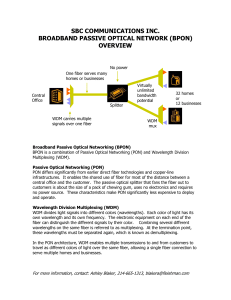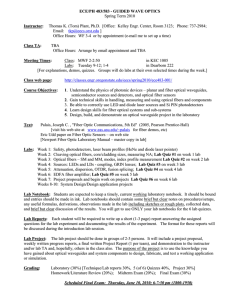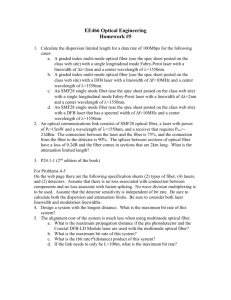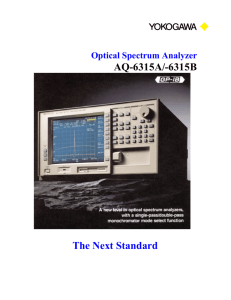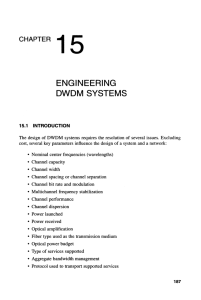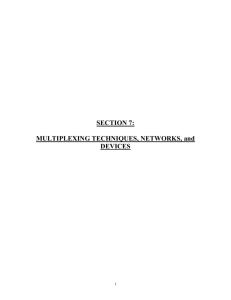Question Form - Education Partners Solution Inc.
advertisement
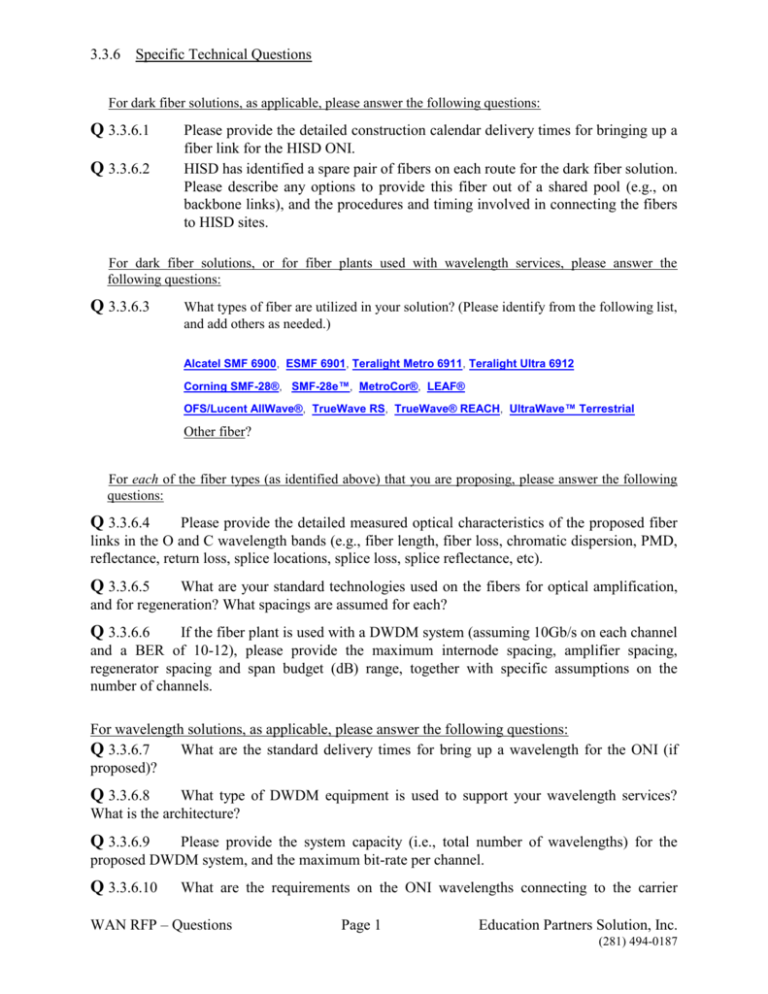
3.3.6 Specific Technical Questions For dark fiber solutions, as applicable, please answer the following questions: Q 3.3.6.1 Q 3.3.6.2 Please provide the detailed construction calendar delivery times for bringing up a fiber link for the HISD ONI. HISD has identified a spare pair of fibers on each route for the dark fiber solution. Please describe any options to provide this fiber out of a shared pool (e.g., on backbone links), and the procedures and timing involved in connecting the fibers to HISD sites. For dark fiber solutions, or for fiber plants used with wavelength services, please answer the following questions: Q 3.3.6.3 What types of fiber are utilized in your solution? (Please identify from the following list, and add others as needed.) Alcatel SMF 6900, ESMF 6901, Teralight Metro 6911, Teralight Ultra 6912 Corning SMF-28®, SMF-28e™, MetroCor®, LEAF® OFS/Lucent AllWave®, TrueWave RS, TrueWave® REACH, UltraWave™ Terrestrial Other fiber? For each of the fiber types (as identified above) that you are proposing, please answer the following questions: Q 3.3.6.4 Please provide the detailed measured optical characteristics of the proposed fiber links in the O and C wavelength bands (e.g., fiber length, fiber loss, chromatic dispersion, PMD, reflectance, return loss, splice locations, splice loss, splice reflectance, etc). Q 3.3.6.5 What are your standard technologies used on the fibers for optical amplification, and for regeneration? What spacings are assumed for each? Q 3.3.6.6 If the fiber plant is used with a DWDM system (assuming 10Gb/s on each channel and a BER of 10-12), please provide the maximum internode spacing, amplifier spacing, regenerator spacing and span budget (dB) range, together with specific assumptions on the number of channels. For wavelength solutions, as applicable, please answer the following questions: Q 3.3.6.7 What are the standard delivery times for bring up a wavelength for the ONI (if proposed)? Q 3.3.6.8 What type of DWDM equipment is used to support your wavelength services? What is the architecture? Q 3.3.6.9 Please provide the system capacity (i.e., total number of wavelengths) for the proposed DWDM system, and the maximum bit-rate per channel. Q 3.3.6.10 What are the requirements on the ONI wavelengths connecting to the carrier WAN RFP – Questions Page 1 Education Partners Solution, Inc. (281) 494-0187 wavelength solution? Q 3.3.6.11 What are the interface constraints (e.g., transparency) and options for connecting to the carrier wavelength solution? Q 3.3.6.12 If ONI uses wavelengths, but without SONET framing (e.g., Ethernet), would this have any impact on the proposed wavelength solution? Q 3.3.6.13 Please indicate whether the optical network element (ONE) interface cards are bitrate specific or do they operate over a range of bit-rates. Q 3.3.6.14 Please indicate the multiplexing/combining capability of the client interface cards (e.g., 4 x 2.5Gb/s to 10Gb/s) for efficient fill of optical wavelengths. Q 3.3.6.15 Please provide the maximum and minimum span budget (dB) for the optical system assuming OC-192 (or equivalent rate) on each channel and a BER of 1x10-12. Q 3.3.6.16 Please indicate whether the optical system complies with the 50 GHz ITU-T grid specified in ITU-T Rec. G.959.1. What are the specific frequencies used in the DWDM system? Q 3.3.6.17 Please indicate whether the proposed optical solution supports tunable lasers. Q 3.3.6.18 Please indicate whether Automatic Gain Control (AGC) for Optical Amplifiers (OAs) can be provisioned in the proposed optical solution. In case AGC is not supported by the system, indicate the alternative OA provisioning for gain control when an additional wavelength is added to the system. Q 3.3.6.19 Please indicate the physical characteristics of the proposed DWDM equipment. For example, the potential partner may specify the shelf size, bay size, bay weight, etc. Q 3.3.6.20 Please indicate the power consumption requirements for all proposed optical equipment that may be required in campus or hub sites. Please answer the following questions only if ring protection or mesh retention is assumed for wavelength services: Q 3.3.6.21 Please specify the type of protection mechanism (e.g., 1+1 dedicated protection or 1:n shared protection) supported in optical ring or mesh wavelength networks. Q 3.3.6.22 Please provide the benefits and tradeoffs of the proposed ring protection or mesh restoration mechanism. Q 3.3.6.23 If an optical ring solution is proposed, please provide the maximum internode spacing, amplifier spacing, regenerator spacing, circumference and number of nodes supportable. WAN RFP – Questions — Page 2 Education Partners Solution, Inc. (281) 494-0187



